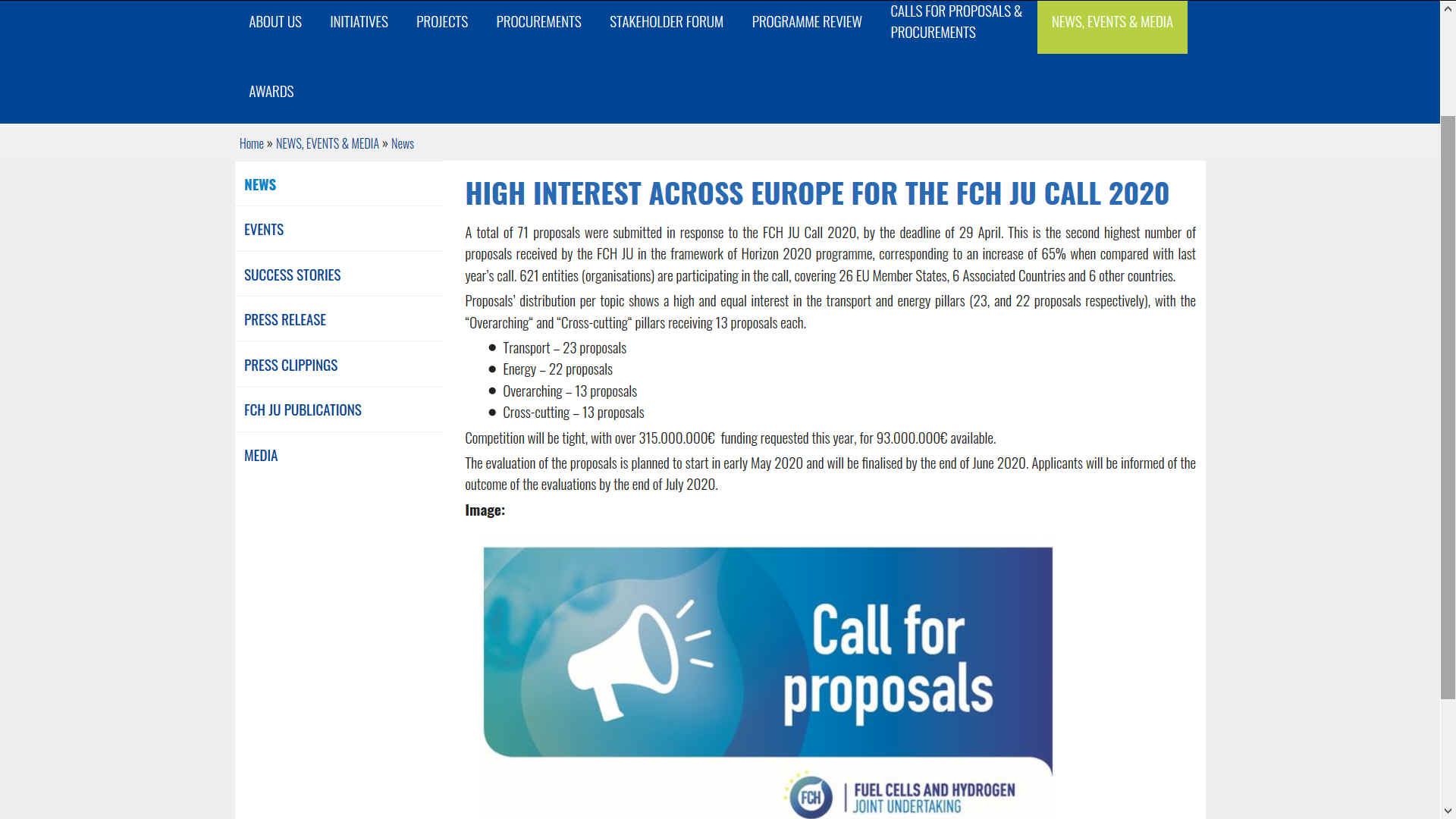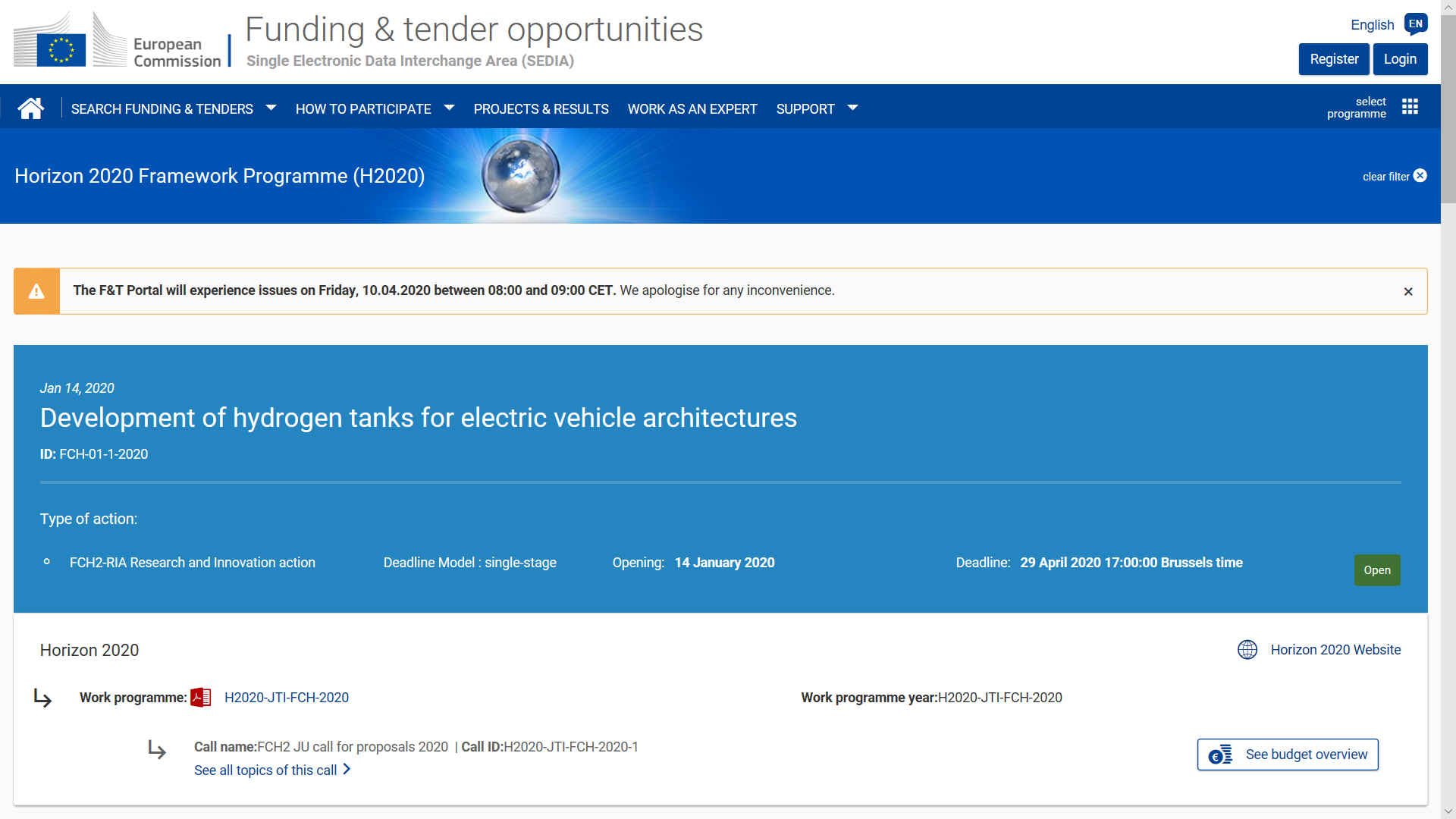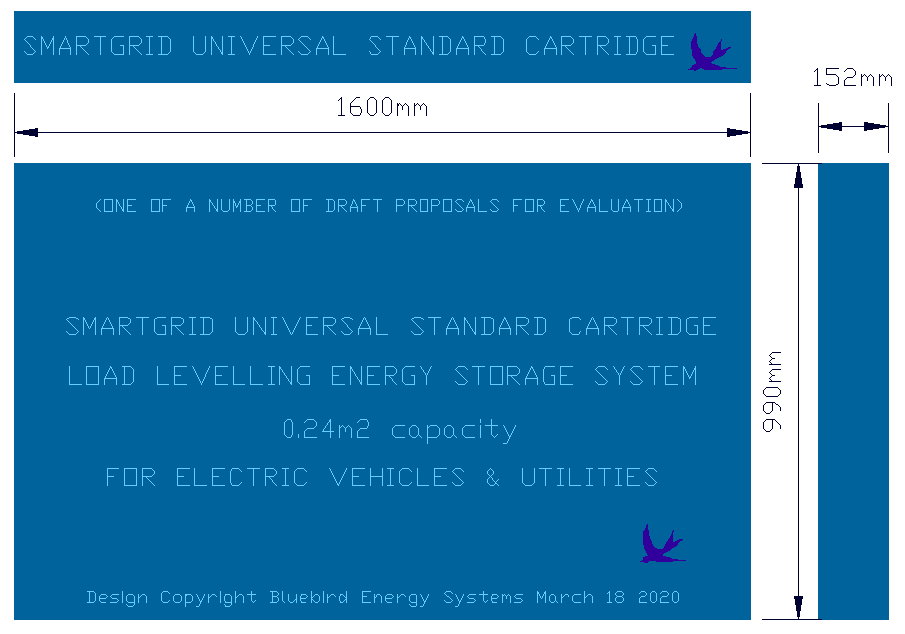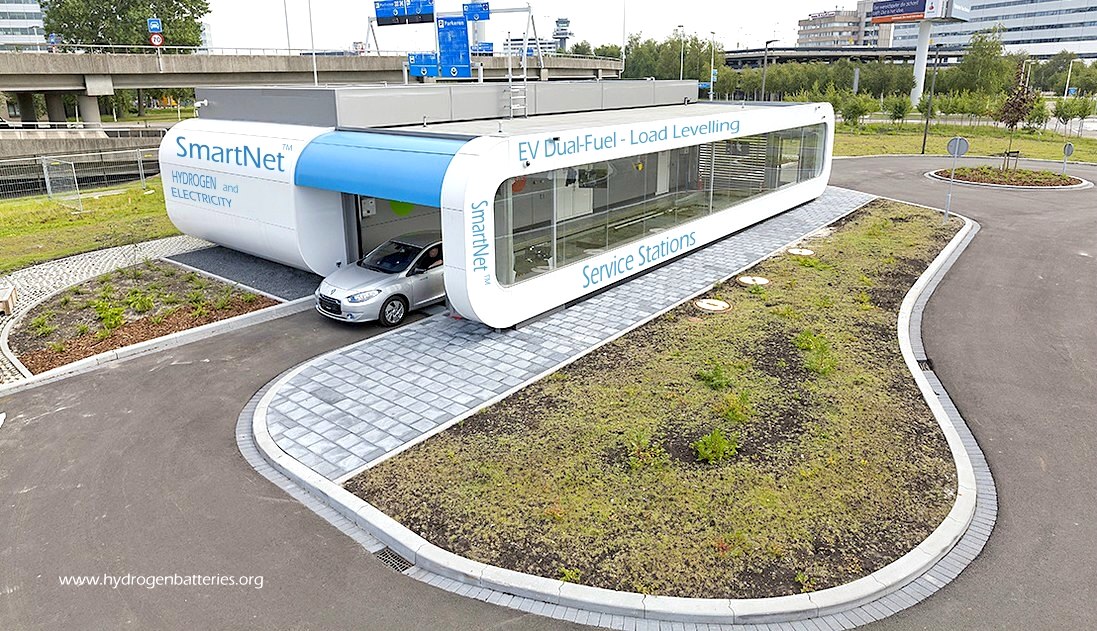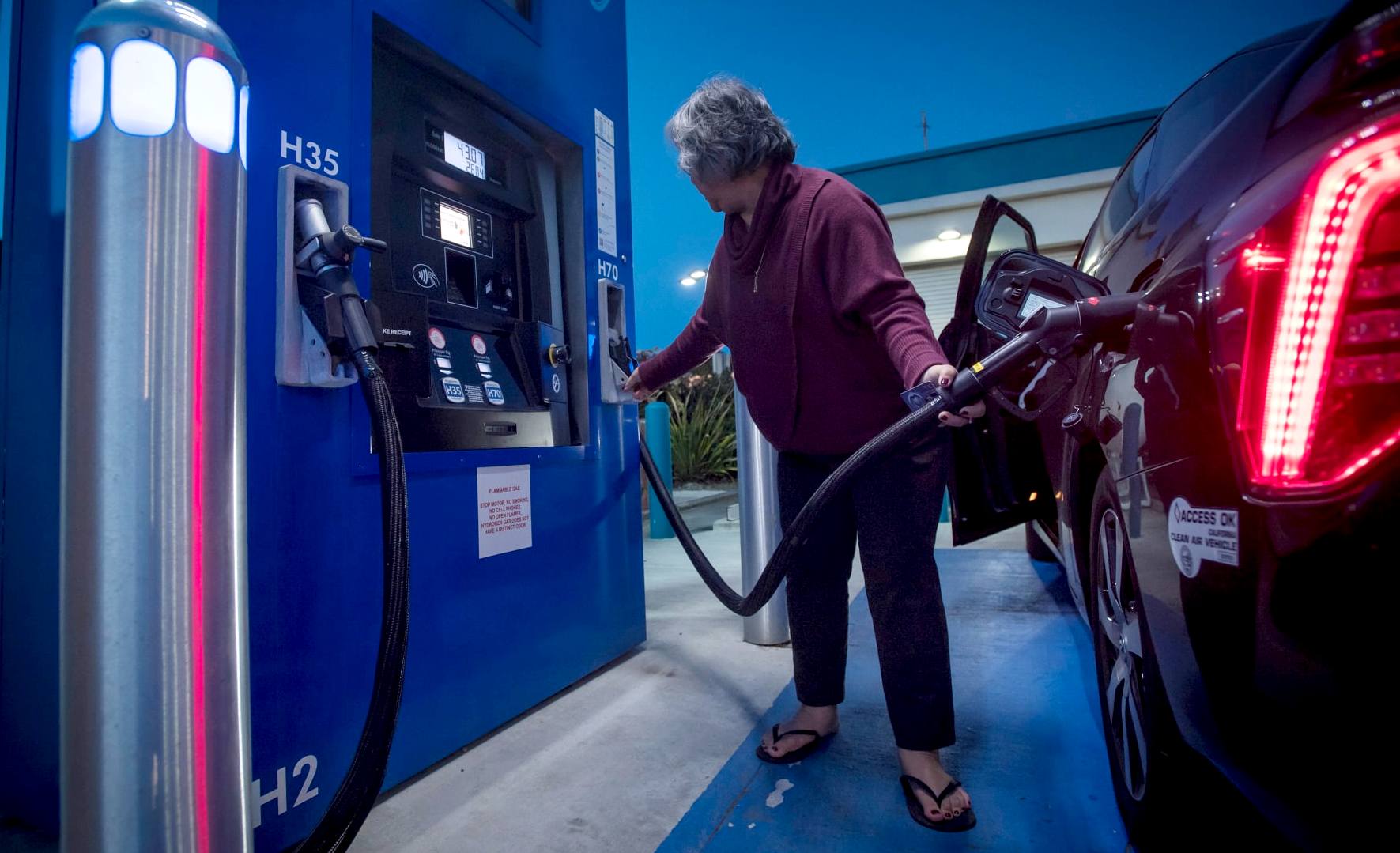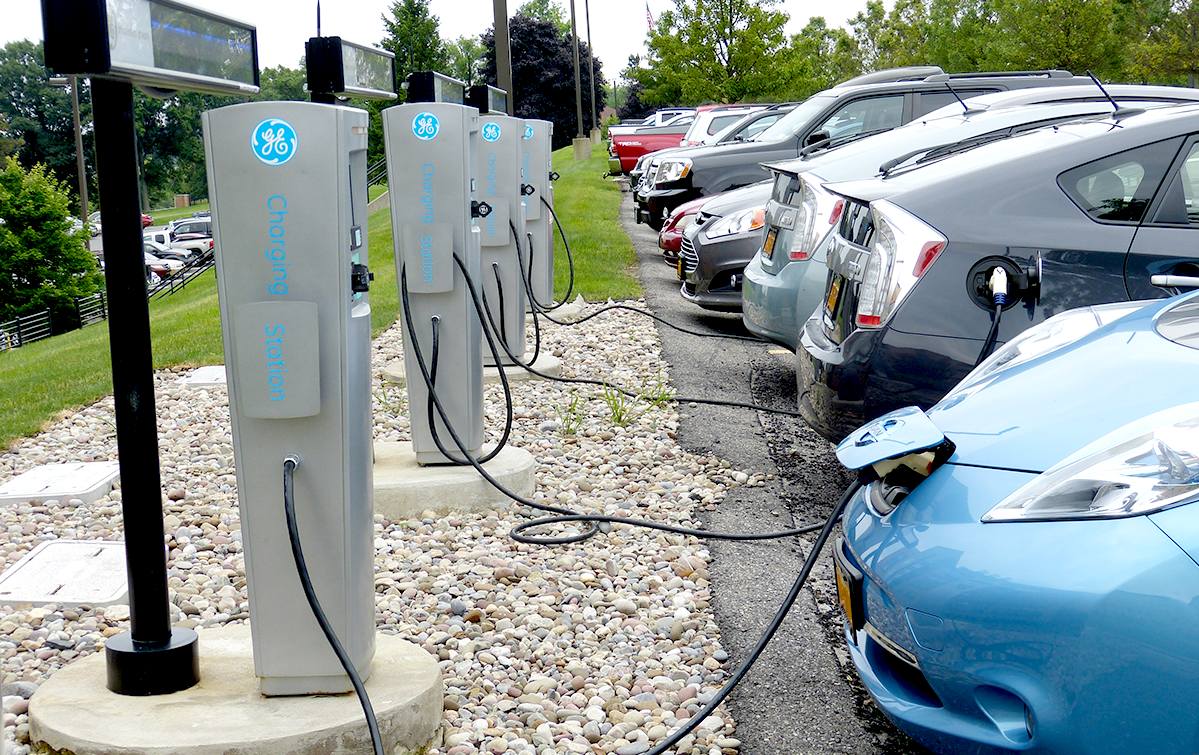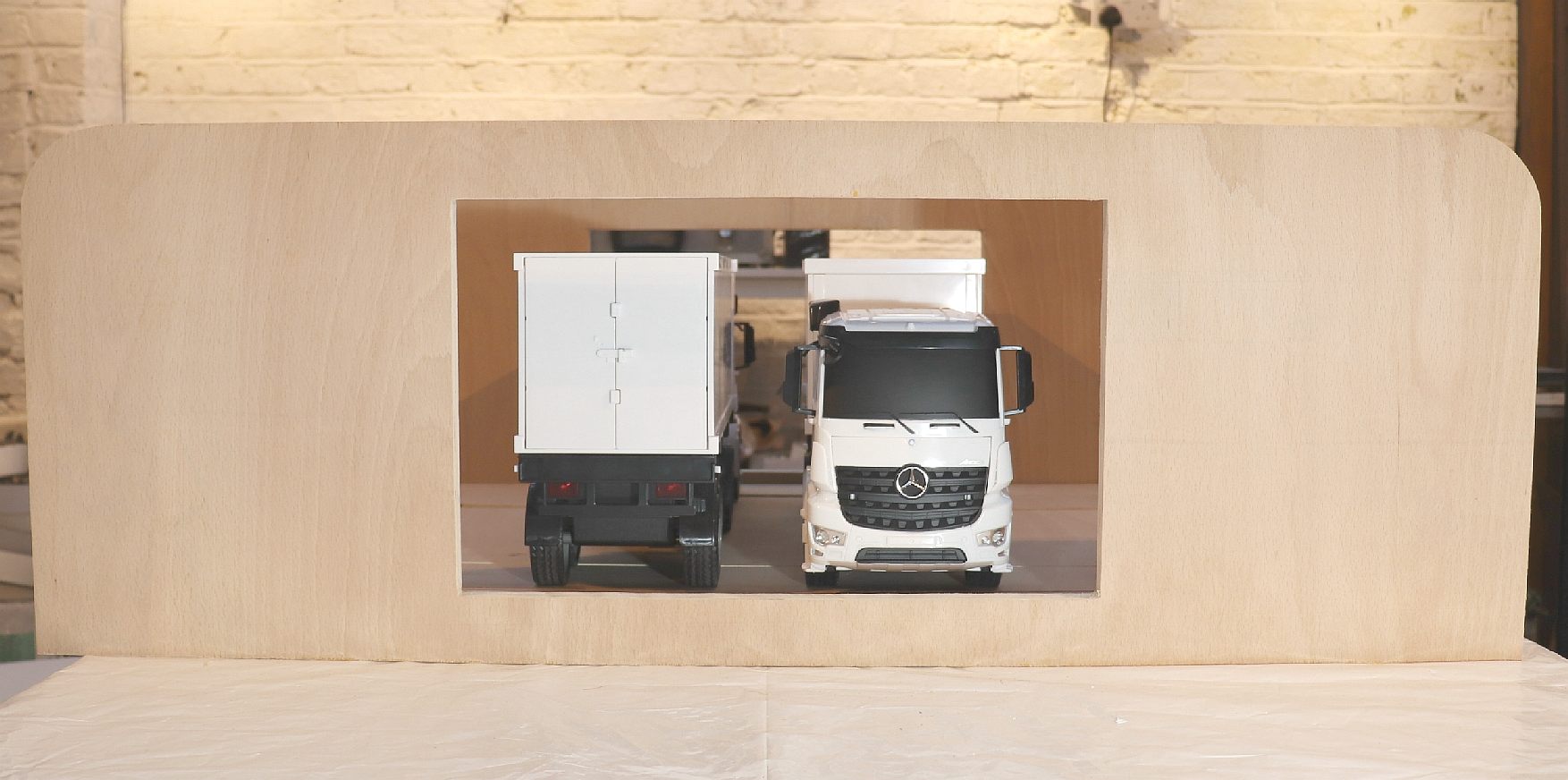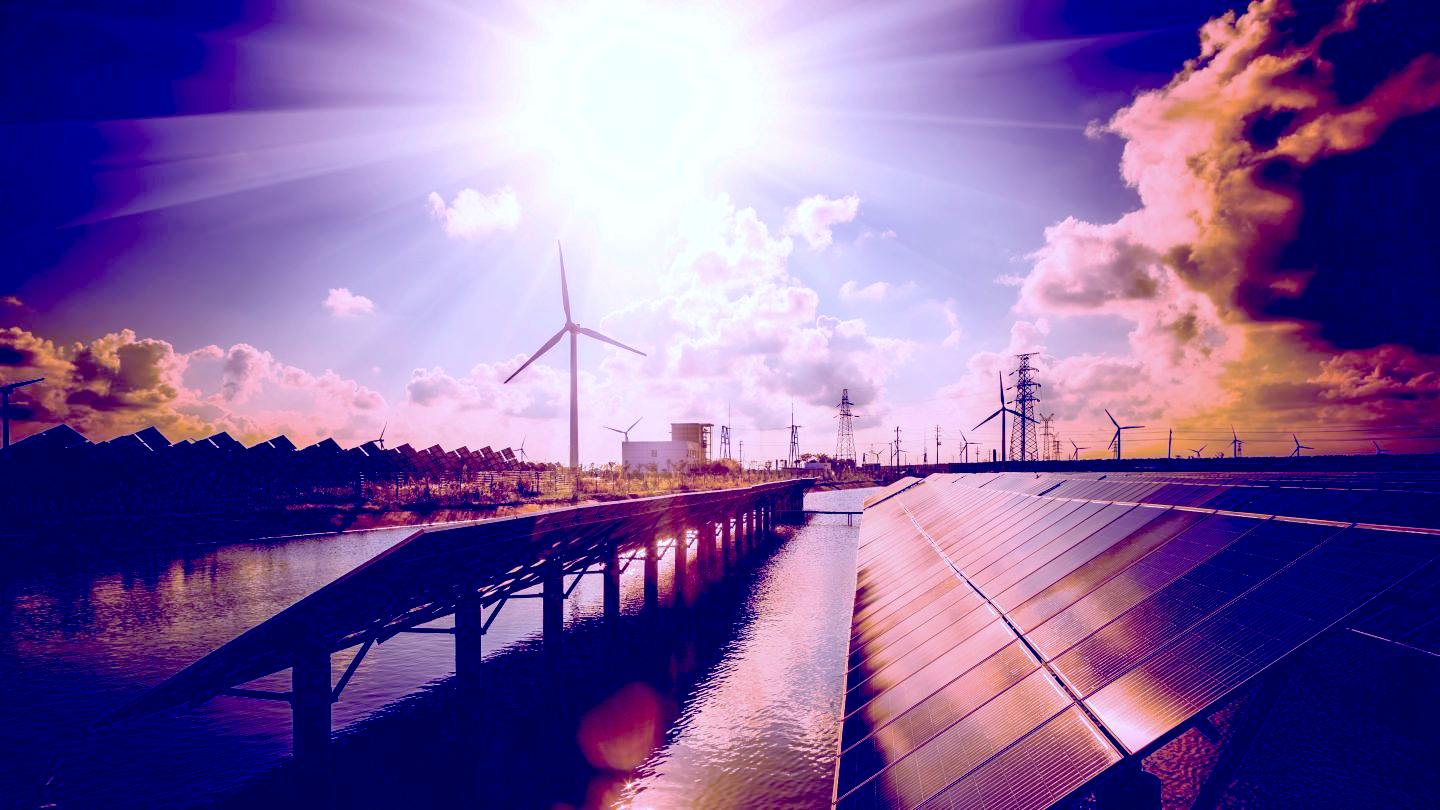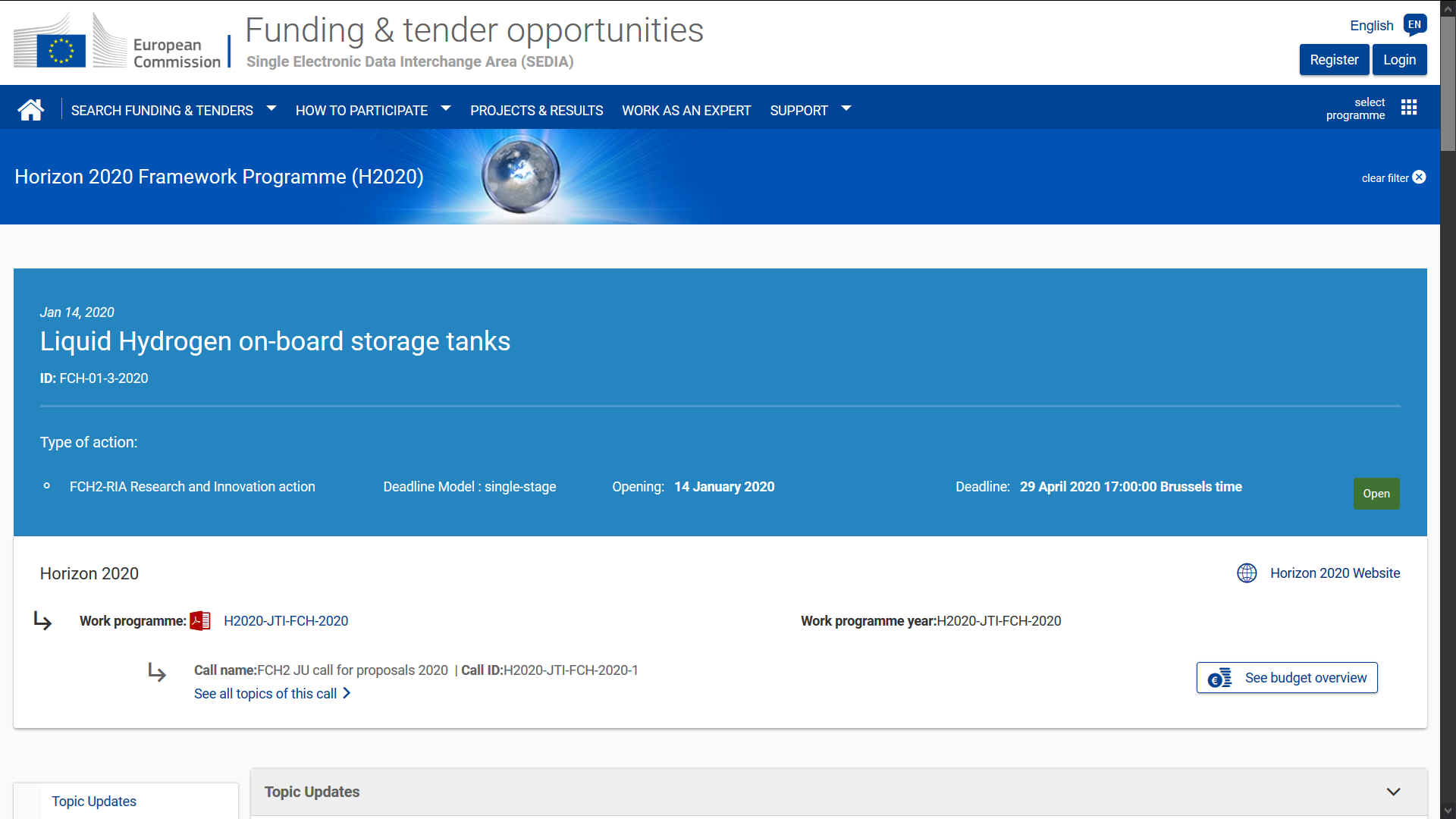|
H2020 FCH-01-1 EV DESIGN & HYDROGEN
Please use our A-Z INDEX to navigate this site where page links may lead to other sites, or see HOME
BATTERIES - COST - STANDARDIZATION - HOME - HYDROGEN - LOAD LEVELLING - PAYD - RANGE ANXIETY - RECOVERY - SERVICE STATIONS |
|
2021-2022 CLUSTER FIVE CALLS FOR PROPOSALS:
• HORIZON-CL5-2021-D2-01-08: Emerging technologies for a climate neutral Europe
• HORIZON-CL5-2021-D3-01-05: Energy Sector Integration: Integrating and combining energy systems to a cost-optimised and flexible energy system of systems
• HORIZON-CL5-2021-D5-01-01: Nextgen vehicles
• HORIZON-CL5-2021-D5-01-03: System approach to achieve optimised Smart EV Charging and V2G flexibility in mass-deployment conditions (2ZERO)
• HORIZON-CL5-2021-D6-01-06: Framework for better coordination of large-scale demonstration pilots in Europe and EU-wide knowledge base (CCAM Partnership)
• HORIZON-CL5-2021-D6-01-08: New delivery methods and business/operating models to green the last mile and optimise road transport
• HORIZON-CL5-2022-D2-01-05: Next generation technologies for High-performance and safe-by-design battery systems for transport and mobile applications (Batteries Partnership)
• HORIZON-CL5-2022-D2-01-08:
Coordination of large-scale initiative on future battery
• HORIZON-CL5-2022-D2-01-11:
CIVITAS 2030 – Coordination and support for EU
RESPONSE: High interest across Europe for the FCH JU Call 2020
A total of 71 proposals were submitted in response to the FCH JU Call 2020, by the extended deadline of 29 April.
This is the second highest number of proposals received by the FCH JU in the framework of Horizon 2020 programme, corresponding to an increase of 65% when compared with last year’s call.
According to a news alert from the FHC dated 30 April 2020, 621 entities (organisations) are participating in the call, covering 26 EU Member States, 6 Associated Countries and 6 other countries.
Proposals’ distribution per topic shows a high and equal interest in the transport and energy pillars (23, and 22 proposals respectively), with the “Overarching“ and “Cross-cutting“ pillars receiving 13 proposals each.
• Transport – 23 proposals
The FCH-JU say that competition will be tight, with over €315.000.000 funding requested this year, for €93.000.000 euros available.
The evaluation of the proposals is planned to start in early May 2020, aiming to be finalised by the end of June 2020. Applicants will be informed of the outcome of the evaluations by the end of July 2020.
The Cleaner Ocean Foundation is not one of the applicants, having run into the buffers during consortium building. With thanks to all who responded positively. The Foundation hopes to build on the contacts made to be able to apply for future calls for innovative proposals that hold the potential to provide a sustainable infrastructure for zero emission vehicles.
H2020-JTI-FCH-2020-1 :
FCH-01-1-2020 Hydrogen tanks for EV architectures
Passengers will require space for free movement, which implies among other changes, body structures without central tunnels, simply because the central tunnel is a throwback to when IC engines were in the front and the driven wheels were on the rear axle.
The central tunnel could be enlarge to carry a central energy cylinder/cartridge, or eliminated altogether, for flatter energy packs. The advent of front wheel drive engine/transaxles, as per Sir Alec Issigonis and the Austin Mini, did away with the need for a tunnel to carry a longitudinal propeller shaft.
Today gasoline and diesel vehicles share the same installation spaces. Similarly, it would be extremely beneficial if hydrogen drive and battery systems could also share the same vehicle architecture.
The integration of both energy systems in the same car body would enable economies of scale, simplify and reduce engineering and manufacturing processes and allow flexible production, which could buffer demand fluctuations.
UNIVERSAL BATTERY CARTRIDGE FORMAT PROPOSAL - This cartridge format provides 0.24 of a meter cubic capacity. All of these formats can be used in multiples to provide up to 1.92 of a cubic meter capacity. This is one of a number of sizes that we will be evaluating as part of a study we hope to obtain funding for. The cartridge is compatible with the SMARTNET services stations concept. The cartridge may be designed to accommodate cars and trucks. The Universal cartridge may be designed to be compatible with hydrogen storage or battery storage. Cleaner Ocean Foundation is looking to either form a consortium to further the concept, or to join an existing consortium.
Due to the expected above changes in future car bodies, installation spaces designated for the integration of energy storage cannot be used efficiently with conventional type IV hydrogen cylinders tanks.
The major challenge today is the integration of hydrogen storage systems that fulfil customers’ autonomy range expectations. Development of novel and innovative tank concepts is therefore necessary, in order to be able to integrate hydrogen drive systems into after-2020 future vehicles.
The main challenge consists of packaging high pressure hydrogen storage vessels (which used to have cylindrical geometries in conventional pressure vessels) into a rectangular shape for battery spaces while complying with current type-approval regulations EC 79/2009 [20] and UNECE Regulation No.134 [21].
Finding a tank design concept while fulfilling requirements for certification as well as realizing a high storage volume for acceptable vehicle ranges is one of the main obstacles.
[20] https://eur-lex.europa.eu/LexUriServ/LexUriServ.do?uri=OJ:L:2009:035:0032:0046:en:PDF
SMARTER SERVICING - In a world limbering up for a hydrogen/battery mobility energy mix, but missing hydrogen filling stations from the equation - we also have to plan ahead for self driving (automated EVs) cars and taxis, that will need to be able to refuel without driver assistance - to secure an comprehensive E-Mobility infrastructure. This is where the SmartNet™ services stations outperform other manual systems hands down. The cartridge may be designed to accommodate cars and trucks. The Universal cartridge may be designed to be compatible with hydrogen storage or battery storage. The Cleaner Ocean Foundation is looking for development partners, vehicle OEMs (especially commercial vans/trucks) and TSOs & DSOs who are looking for ways of using renewable energy spikes, and calling on stored energy during peaks.
Scope:
The core goal of this project is the development and validation of an innovative hydrogen 70 MPa tank system in a conformable shape that can be integrated in light-duty vehicles with flat architectures, unsuitable for conventional cylindrical Type IV (Composite Overwrapped Pressure Vessel, COPV) tanks.
The new storage system concept should take into account especially industrial manufacturability, mechanical safety, low permeation, fire resistance, low costs, high gravimetric and volumetric efficiency, and meet type approval requirements. It should also be compatible with SAE J2601 [22] and allow fast refueling according to SAE J2601 refueling protocols
It is expected that the new storage system would need to fit into a design space of 1800 x 1300 x 140 mm³. The geometry and concept of the tank system is however not defined yet.
The system can consist of one or more separate vessels that are linked in order to form the tank system.
The project should address the analysis, simulation, hardware validation and the Computer-Aided Design, CAD-based vehicle integration of the chosen concept.
It is expected that at least 10 prototypes will be built-up and major performance tests will be conducted in order to validate the concept according to current type-approval regulations. If a concept is chosen such that it shows a tank system consisting of several identical vessels linked to form the tank system, one prototype means one vessel; a vessel defines a closed containment with a separate valve.
The following tests are expected to be performed:
Non-destructive geometric/gravimetric characterization (on at least 2 prototypes);
TRL at the start of the project: 2 and TRL at the end of the project: 4.
Any safety-related event that may occur during execution of the project shall be reported to the European Commission's Joint Research Centre (JRC) dedicated mailbox:
This mailbox manages the European hydrogen safety reference database, HIAD and the Hydrogen Event and Lessons LEarNed database, HELLEN.
The consortium should consider collaborating with the European Commission's Joint Research Centre (JRC) and using its High Pressure Gas Tank Testing Facility (GASTEF) for conducting hydrogen cycle tests to complement the performance tests requested above
The project should contribute towards the activities of Mission Innovation - Hydrogen Innovation Challenge. Cooperation with entities from Hydrogen Innovation Challenge member countries, which are neither EU Member States nor Horizon 2020 Associated countries, is encouraged (see chapter 3.3 for the list of countries eligible for funding, and point G. International Cooperation).
The FCH 2 JU considers that proposals requesting a contribution from the EU of EUR 2 million would allow this specific challenge to be addressed appropriately. Nonetheless, this does not preclude submission and selection of proposals requesting other amounts.
Expected duration: 3 years
[22] https://www.sae.org/standards/content/j2601_201003/
The project should represent a new approach of mobile hydrogen storage in the EU and, if successful, will generate a true breakthrough, opening the door of the FCEV technology for all types of future vehicle concepts.
A prototype would then need to be developed and built within the envelope of the installation space, and the project should result in:
- Prototypes designed for storing hydrogen gas at a nominal working pressure of 70 MPa;
- Developing an understanding for main requirements in future design space;
- Understanding of manufacturing hurdles and solutions
- Demonstration that future fuel cell electric vehicles can share vehicle architectures with battery electric vehicles;
- Better understanding for temperature changes inside the pressure vessels with new geometries due to hydrogen fueling and defueling;
- Necessary steps for certification and standardization of investigated pressure vessel geometries should be shown (especially critical tests like drop and impact test).
The project should measure its impact through the following KPIs:
Volumetric efficiency (according to the FCH 2 JU target for 2024);
Within the H2 tank system > 0.033 kg H2/L system;
Within the estimated design space (1800 x 1300 x 140 mm³) > 45 % (stored H2 volume within design space volume);
Gravimetric efficiency (according to the FCH 2 JU target for 2024) > 5.7 %;
Costs for tank system < 400€/kg H2;
Permeation < 46 cm³/h/l at 55 °C (according to UNECE Regulation No.134);
No leakage or burst of the vessel may occur under an engulfing fire affecting the whole tank at a temperature higher than 590 °C for a duration of at least 10 minutes, according to UNECE Regulation No.134;
Burst pressure > 157.5 MPa (according to UNECE Regulation No.134);
Hydraulic pressure cycle test: no leakage before 11,000 cycles and no burst before 22,000 cycles at 87.5 MPa (according to UNECE Regulation No.134).
The conditions related to this topic are provided in the chapter 3.3 of the FCH2 JU 2020 Annual Work Plan and in the General Annexes to the Horizon 2020 Work Programme 2018– 2020 which apply mutatis mutandis.
AUTOMOTIVE EV COMPARISON - Where charging up a battery-powered car can take anything from half an hour to a whole night, you can refuel a hydrogen car in just five minutes using flexible hoses. But, you can also refuel a battery car in less time using cartridge exchange. Meaning that hydrogen loses out, if we take into account conversion losses. For this reason hydrogen is unlikely to achieve the same level of market penetration, without a means to work alongside battery vehicles, such that the choice for the buying public is not such a risk, as if putting all your eggs in one basket.
THE SLOW LANE - We all live fast lifestyles. Waiting 30 minutes for rapid charging not only strains the grid, but also damages batteries, and nobody has thirty minutes to waste - best case - worst case 6-8 hours. A truck size battery would take hours to (so-called) rapid charge. It is just not practical. Ignoring for now that there are no charging points along the streets in towns and cities, or at supermarkets.
MODEL 1:20 - April 6 2020, a model of the service station is under construction, shown here with two Mercedes articulated container trucks inside. We are using plywood for the building and some of the working parts - that cannot be shown due to patent law prohibiting prior publication. The Automated & Electric Vehicle Act 2018, makes it law in England that provision must be made for charging and refuelling of electric vehicles at service stops. This system would more accurately be described as a refuelling point - since the energy exchanges for trucks and cars are virtually instant. The building can be a quarter this size for city locations where space is limited. But for load levelling purposes, the larger the capacity of stored electricity, the more efficient the grid. Copyright photograph © 6 April 2020, Cleaner Ocean Foundation.
FET - FUTURE EMERGING TECHNOLOGIES PATHFINDER (PILOT)
GRAND CHALLENGES - UK
EIC EUROPEAN INNOVATION COUNCIL ACCELERATOR (PILOT)
EIB EUROPEAN INVESTMENT BANK LOCAL ENERGY ASSISTANCE
TECHNOLOGICAL COMPASS - It is the part of a wise man to keep himself today for tomorrow, and not to venture all his eggs in one basket. SMARTNET allows for change in technology. You don't have to bet on batteries or fuel cells. Include both in a diverse asset portfolio - and watch you egg hatch into a solution.
At the moment, there are two energy camps. Those developing batteries and those developing fuel cells. Even these camps are subdivided. What if those camps could all work together to develop the vehicle architecture and renewable energy infrastructure for future generations. SMARTNET potentially pulls all energy specialists together, to work with all renewable energy generators, aiming for a better solution.
CONTACTS
Bluebird Energy Systems (SME) PIC No: 895922168
Cleaner Ocean Foundation (Not for Profit) PIC: 915580382
LINKS & REFERENCE
https://www.fch.europa.eu/news/high-interest-across-europe-fch-ju-call-2020
SMARTNET ™ encapsulates several advanced concepts, such that one might lose sight of the features and advantages of what may be described as a comprehensive transport infrastructure system, to complement policies such as the Automated & Electric Vehicles Act 2018. Please therefore use the header and footer links on associated web pages for ease of subject navigation.
BATTERIES - COST - STANDARDIZATION - HOME - HYDROGEN - LOAD LEVELLING - PAYD - RANGE ANXIETY - RECOVERY - SERVICE STATIONS
Please use our A-Z INDEX to navigate this site
|
|
|
This website is provided on a free basis as a public information service. copyright © Climate Change Trust 2020. Solar Studios, BN271RF, United Kingdom. SmartNet™ and SmartGrid™ are trade names belonging to the CCT.
|
